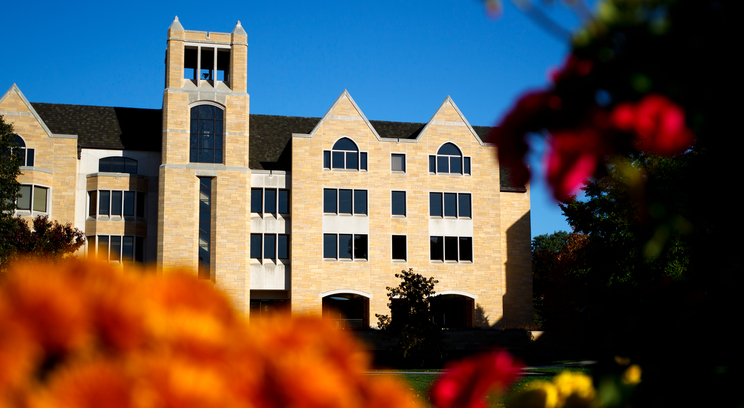Times change, and organizations change along with them. The latest change for the University of St. Thomas is the reporting structure for UST Libraries.
The libraries – O'Shaughnessy-Frey Library and Archbishop Ireland Memorial Library on the St. Paul campus, and the Charles J. Keffer Library on the Minneapolis campus – now report to Dr. Susan Huber, executive vice president and provost, in Academic Affairs.
For more than a decade, UST Libraries had reported to Dr. Sam Levy, vice president for Information Resources and Technologies.
The new reporting structure took effect on Feb. 2. (UST Libraries does not include the Law Library, which reports directly to the dean of the School of Law.)
"The libraries are such an integral part of the intellectual life of the university that it seems they naturally fit within the academic reporting structure," Huber said. "The decision to make this change was mutual. Sam Levy, Dan Gjelten and I consider this to be a sound organizational change. I am simply delighted to welcome Dan and his entire staff back to Academic Affairs."
Looking back, the libraries reported to the vice president for Academic Affairs until the fall of 2000, said Gjelten, director of UST Libraries, when they began reporting to Levy. The IRT division was formed that year from Instructional Support Services and Computing and Communication Services in addition to UST Libraries.
“The internet became a big phenomenon on campus in the mid-1990s. We were starting to create our first Web pages,” Gjelten said. “I think the library might have had one of the first Web pages on campus. By 2000, it became really clear, I think, to the university that having a division that was really focused on these technologies in both Administrative Affairs and Academic Affairs was important. The libraries saw information technology as a resource that was going to really enhance the content that we had in the library sitting on our shelves.”
He added that it is important for UST Libraries to continue their strong relationship with the IRT staff and Web developers “because information technologies and the Web are essential to accessing library content today.”
"We've had a great, mutually beneficial relationship with the Libraries in IRT. But I felt it was time for the Libraries to report to the Provost, and I am happy to have recommended it," Levy commented.
“I think it was just acknowledged that libraries are fundamentally academic in nature, that our main emphasis and focus is on teaching and learning, and that our relationship with the faculty was really essential and that they would be enhanced by essentially moving us back to where we were for many decades,” Gjelten said.
UST Libraries:
- Have about 375,000 print volumes, 135,000 electronic books, 51,000 electronic journals, 277 electronic databases and more than 75,000 audio and video titles; the vast majority of the audio and video titles are streaming content available anytime and anywhere.
- Have developed more than 500 online “subject guides” that help users sort out the vast amounts of information available in dozens of subject areas and academic disciplines. These guides are accessed more than 500,000 times each year.
- Deliver annually about 350 instructional sessions in which they train students in the effective use of information in a contemporary print/digital academic library.
- In a typical year, reference librarians answer more than 5,000 individual requests for reference assistance in face-to-face, telephone and online interactions.
- Average (at O’Shaughnessy-Frey) about 60,000 visitors each month during the school year, and around 500,000 visits per year, an increase of about 75 percent since 2000.







